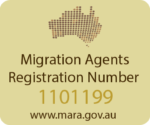Australia provides protection for asylum seekers who:
- Meet the United Nations definition of a refugee, as defined in the 1951 Convention Relating to the Status of Refugees and its 1967 Protocol (Refugees Convention)
- Are owed protection under other international human rights treaties and conventions which give rise to complementary protection obligations.
The majority of people in need of protection in Australia are resettled from other countries through Australia’s offshore humanitarian resettlement programme.
The Refugees Convention defines a refugee as a person who:
- is outside their country of nationality or their usual country of residence
- is unable or unwilling to return or to seek the protection of that country due to a well-founded fear of being persecuted for reasons of race, religion, nationality, membership of a particular social group, or political opinion
- is not a war criminal and has not committed any serious non-political crimes or acts contrary to the purposes and principles of the United Nations.
The Refugees Convention does not oblige signatory countries to provide protection to people who do not fear persecution and have left their country of nationality or residence on the basis of war, famine, environmental collapse or in order to seek economic opportunities.
Protection obligations may also not be owed to a person who already has effective protection in another country, through citizenship or some other right to enter and remain safe in that country.
International law recognises that people at risk of persecution have a legal right to flee their country and seek refuge elsewhere, but does not give them a right to enter a country of which they are not a national. Nor do people at risk of persecution have a right to choose their preferred country of protection.
Humanitarian Programme:
The Humanitarian Programme has two important functions:
- the onshore protection/asylum component fulfils Australia’s international obligations by offering protection to people already in Australia who are found to be refugees according to the United Nations Convention relating to the Status of Refugees
- the offshore resettlement component expresses Australia’s commitment to refugee protection by going beyond these obligations and offering resettlement to people overseas for whom this is the most appropriate option.
Onshore protection:
The onshore component of the Humanitarian Programme aims to provide options for people who wish to apply for protection (or asylum) after arrival in Australia.
Offshore resettlement:
The offshore resettlement component comprises two categories of permanent visas. These are:
- Refugee—for people who are subject to persecution in their home country, who are typically outside their home country, and are in need of resettlement. The majority of applicants who are considered under this category are identified and referred by UNHCR to Australia for resettlement. The Refugee category includes the Refugee, In-country Special Humanitarian, Emergency Rescue and Woman at Risk visa subclasses.
- Special Humanitarian Programme (SHP)—for people outside their home country who are subject to substantial discrimination amounting to gross violation of human rights in their home country, and immediate family of persons who have been granted protection in Australia. Applications for entry under the SHP must be supported by a proposer who is an Australian citizen, permanent resident or eligible New Zealand citizen, or an organisation that is based in Australia.
Complementary protection:
Complementary protection is the term used to describe a category of protection for people who are not refugees as defined in the Refugees Convention, but who also cannot be returned to their home country, because there is a real risk that they would suffer certain types of harm that would engage Australia’s international non-refoulement (non-return) obligations.
Australia’s non-refoulement obligations, in addition to those under the Refugees Convention, are derived from international human rights conventions to which Australia became a party in the 1980s and 1990. These are:
- the International Covenant on Civil and Political Rights (ICCPR) and its Second Optional Protocol aiming at the abolition of the death penalty
- the Convention against Torture and Other Cruel, Inhuman or Degrading Treatment or Punishment(CAT).
Non-refoulement obligations may be engaged under these treaties where there are substantial grounds for believing that, as a necessary and foreseeable consequence of being removed from Australia to a receiving country, there is a real risk that the person will suffer significant harm.
Significant harm is where a person will be subjected to:
- Arbitrary deprivation of his or her life
- The death penalty
- Torture
- Cruel or inhuman treatment or punishment
- Degrading treatment or punishment.
Refugee and humanitarian visas:
200 – Refugee
201 – In-country Special Humanitarian
202 – Global Special Humanitarian
203 – Emergency Rescue
204 – Woman at risk
866 – Protection
Please note that EVICON does not provide any assistance in any of the above type of applications. Please contact DIBP directly to seek advice on such matters.


